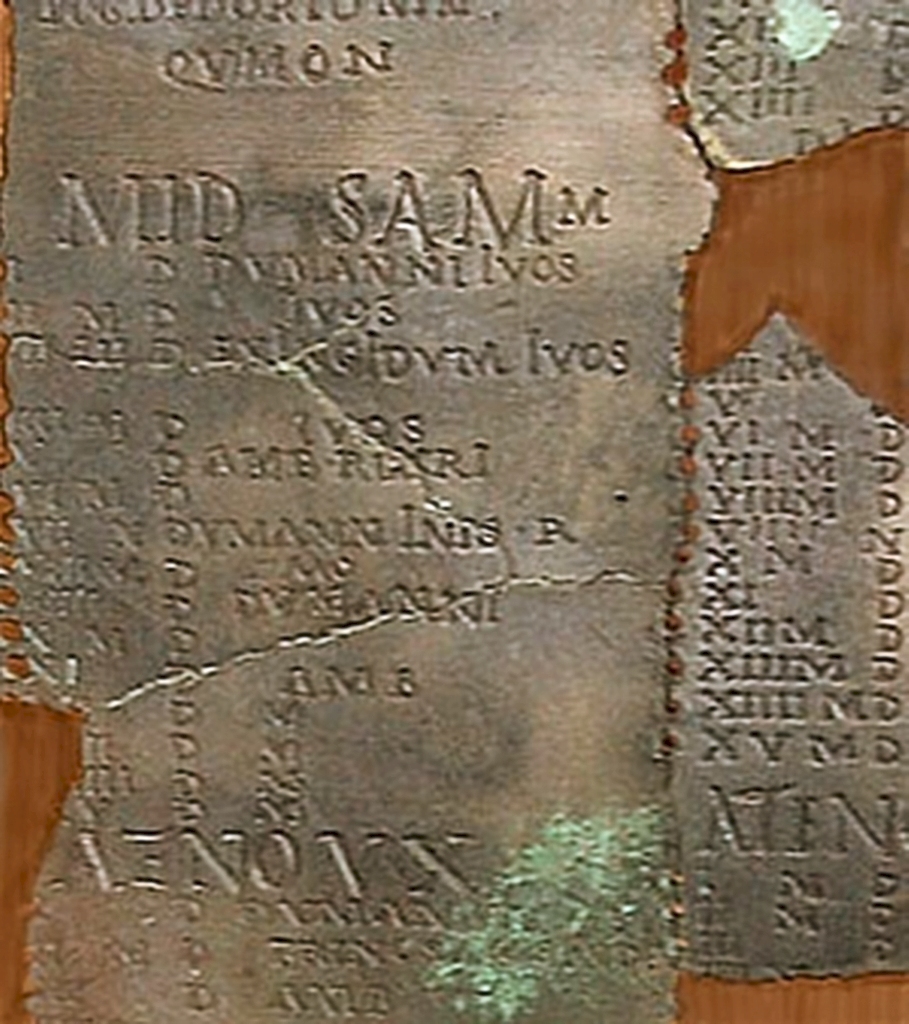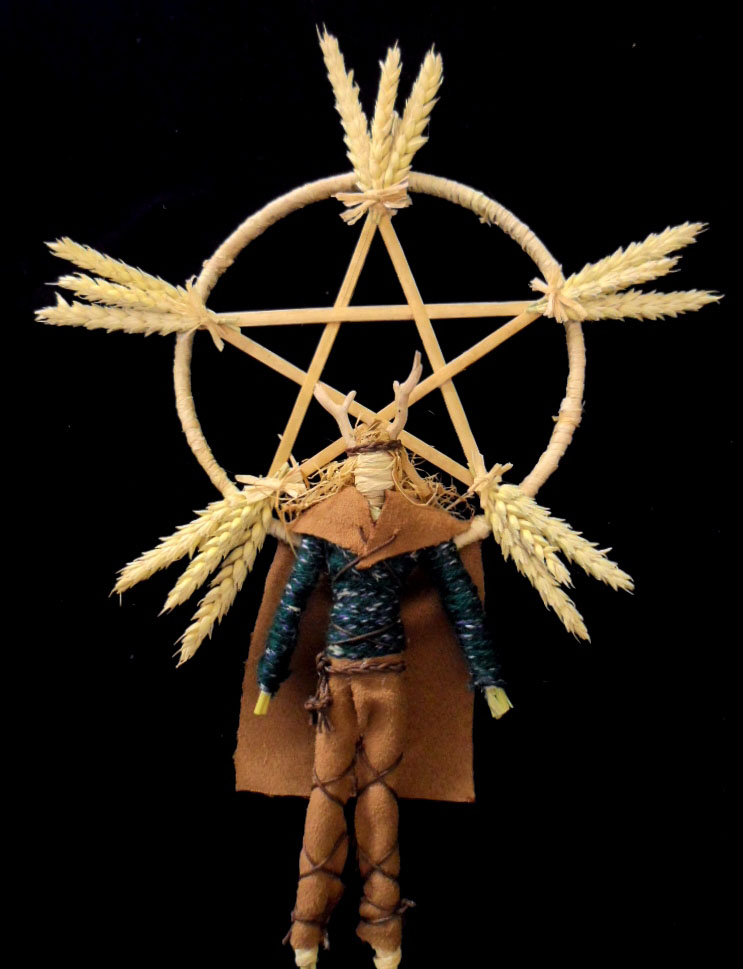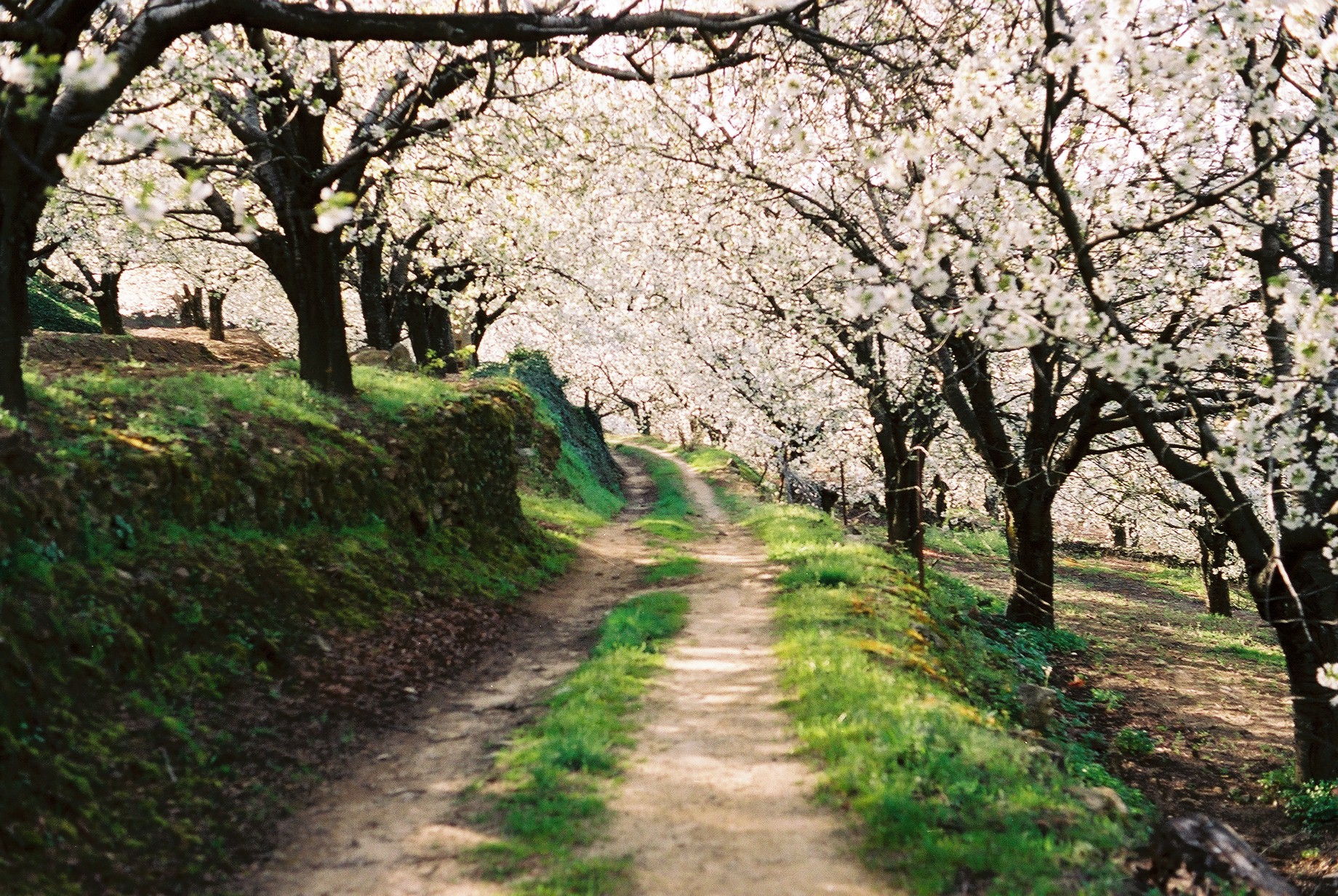|
Imbolc
Imbolc or Imbolg (), also called Saint Brigid's Day ( ga, Lá Fhéile Bríde; gd, Là Fhèill Brìghde; gv, Laa'l Breeshey), is a Gaelic traditional festival. It marks the beginning of spring, and for Christians it is the feast day of Saint Brigid, Ireland's patroness saint. It is held on 1 February, which is about halfway between the winter solstice and the spring equinox.Danaher, Kevin (1972) ''The Year in Ireland: Irish Calendar Customs'' Dublin, Mercier. p. 38McNeill, F. Marian (1959, 1961) ''The Silver Bough'', Vol. 1–4. William MacLellan, Glasgow; Vol. 2, pp. 11–42 Historically, its traditions were widely observed throughout Ireland, Scotland and the Isle of Man. It is one of the four Gaelic seasonal festivals, along with: Bealtaine, Lughnasadh and Samhain. Imbolc is mentioned in early Irish literature, and there is evidence suggesting it was also an important date in ancient times. It is believed that Imbolc was originally a pagan festival as ... [...More Info...] [...Related Items...] OR: [Wikipedia] [Google] [Baidu] |
Samhain
Samhain ( , , , ; gv, Sauin ) is a Gaelic festival on 1 NovemberÓ hÓgáin, Dáithí. ''Myth Legend and Romance: An Encyclopaedia of the Irish Folk Tradition''. Prentice Hall Press, 1991. p. 402. Quote: "The basic Irish division of the year was into two parts, the summer half beginning at Bealtaine (May 1st) and the winter half at Samhain (November 1st) ... The festivals properly began at sunset on the day before the actual date, evincing the Celtic tendency to regard the night as preceding the day". marking the end of the harvest season and beginning of winter or "darker half" of the year. Celebrations begin on the evening of 31 October, since the Celtic day began and ended at sunset. This is about halfway between the autumnal equinox and winter solstice. It is one of the four Gaelic seasonal festivals along with Imbolc, Beltaine and Lughnasa. Historically it was widely observed throughout Ireland, Scotland, Galicia and the Isle of Man (where it is spelled Sauin). A si ... [...More Info...] [...Related Items...] OR: [Wikipedia] [Google] [Baidu] |
Brigid Of Kildare
Saint Brigid of Kildare or Brigid of Ireland ( ga, Naomh Bríd; la, Brigida; 525) is the patroness saint (or 'mother saint') of Ireland, and one of its three national saints along with Patrick and Columba. According to medieval Irish hagiographies, she was an abbess who founded several convents of nuns, most notably that of Kildare, which was one of the most important in Ireland. There are few historical facts about her, and early hagiographies are mainly anecdotes and miracle tales, some of which are rooted in pagan folklore.Farmer, David. ''The Oxford Dictionary of Saints'' (Fifth Edition, Revised). Oxford University Press, 2011. p.66 She is patroness of many things, including poetry, learning, healing, protection, blacksmithing, livestock and dairy production. The saint shares her name with a Celtic goddess. Brigid's feast day is 1 February, which was originally a pre-Christian festival called Imbolc, marking the beginning of spring. From 2023 it will be a public holi ... [...More Info...] [...Related Items...] OR: [Wikipedia] [Google] [Baidu] |
Lughnasadh
Lughnasadh or Lughnasa ( , ) is a Gaelic festival marking the beginning of the harvest season. Historically, it was widely observed throughout Ireland, Scotland and the Isle of Man. In Modern Irish it is called , in gd, Lùnastal, and in gv, Luanistyn. Traditionally it is held on 1 August, or about halfway between the summer solstice and autumn equinox. In recent centuries some of the celebrations have been shifted to the Sunday nearest this date. Lughnasadh is one of the four Gaelic seasonal festivals, along with Samhain, Imbolc and Beltane. It corresponds to other European harvest festivals such as the Welsh and the English Lammas. Lughnasadh is mentioned in some of the earliest Irish literature and has pagan origins. The festival itself is named after the god Lugh. It inspired great gatherings that included religious ceremonies, ritual athletic contests (most notably the Tailteann Games), feasting, matchmaking, and trading. Lughnasadh occurred during a very poor ... [...More Info...] [...Related Items...] OR: [Wikipedia] [Google] [Baidu] |
Wicca
Wicca () is a modern Pagan religion. Scholars of religion categorise it as both a new religious movement and as part of the occultist stream of Western esotericism. It was developed in England during the first half of the 20th century and was introduced to the public in 1954 by Gerald Gardner, a retired British civil servant. Wicca draws upon a diverse set of ancient pagan and 20th-century hermetic motifs for its theological structure and ritual practices. Wicca has no central authority figure. Its traditional core beliefs, principles, and practices were originally outlined in the 1940s and 1950s by Gardner and an early High Priestess, Doreen Valiente. The early practices were disseminated through published books and in secret written and oral teachings passed along to their initiates. There are many variations on the core structure, and the religion grows and evolves over time. It is divided into a number of diverse lineages, sects and denominations, referred to as ... [...More Info...] [...Related Items...] OR: [Wikipedia] [Google] [Baidu] |
Brigid's Cross
Brigid's cross or Brigit's cross (Irish: ''Cros Bríde'', ''Crosóg Bríde'' or ''Bogha Bríde'') is a small variant of the Christian cross often woven from straw or rushes. It appears in many different shapes, but the most popular designs feature a woven diamond or lozenge in the centre. The cross is named for Brigid of Kildare, who is said to have woven a cross to aid in a pagan chieftain's deathbed conversion. Brigid's cross is typically woven on 1 February, her feast day, as well as the festival of Imbolc in pre-Christian Ireland. Hanging Brigid's cross from the rafters of one's house was believed to bring the blessing and protection of the saint for the remainder of the year. The practice of crafting Brigid's crosses declined in the 20th century, however, in part due to house renovations that made hanging them difficult. In addition to the shamrock and Celtic harp, Brigid's cross is a national symbol of Ireland. From 1962 to 1995, it was incorporated into the Raidi ... [...More Info...] [...Related Items...] OR: [Wikipedia] [Google] [Baidu] |
Bealtaine
Beltane () is the Gaelic May Day festival. Commonly observed on the first of May, the festival falls midway between the spring equinox and summer solstice in the northern hemisphere. The festival name is synonymous with the month marking the start of summer in Ireland, May being ''Mí na Bealtaine''. Historically, it was widely observed throughout Ireland, Scotland, and the Isle of Man. In Irish the name for the festival day is (), in Scottish Gaelic (), and in Manx Gaelic /. Beltane is one of the principal four Gaelic seasonal festivals—along with Samhain, Imbolc, and Lughnasadh—and is similar to the Welsh . Bealtaine is mentioned in the earliest Irish literature and is associated with important events in Irish mythology. Also known as ("first of summer"), it marked the beginning of summer and was when cattle were driven out to the summer pastures. Rituals were performed to protect cattle, people and crops, and to encourage growth. Special bonfires were kindled, w ... [...More Info...] [...Related Items...] OR: [Wikipedia] [Google] [Baidu] |
Groundhog Day
Groundhog Day ( pdc, Grund'sau dåk, , , ; Nova Scotia: Daks Day) is a popular North American tradition observed in the United States and Canada on February 2. It derives from the Pennsylvania Dutch superstition that if a groundhog emerges from its burrow on this day and sees its shadow due to clear weather, it will retreat to its den, and winter will go on for six more weeks; if it does not see its shadow because of cloudiness, spring will arrive early. While the tradition remains popular in the 21st century, studies have found no consistent association between a groundhog seeing its shadow and the subsequent arrival time of spring-like weather. The weather lore was brought from German-speaking areas where the badger (german: link=no, Dachs) is the forecasting animal. This appears to be an enhanced version of the lore that clear weather on the Christian festival of Candlemas forebodes a prolonged winter. The Groundhog Day ceremony held at Punxsutawney in western Penn ... [...More Info...] [...Related Items...] OR: [Wikipedia] [Google] [Baidu] |
Ancient Celtic Religion
Ancient Celtic religion, commonly known as Celtic paganism, was the religion of the ancient Celtic peoples of Europe. Because the ancient Celts did not have writing, evidence about their religion is gleaned from archaeology, Greco-Roman accounts (some of it hostile and probably not well-informed), and literature from the early Christian period. Green, Miranda (2012). "Chapter 25: The Gods and the supernatural", ''The Celtic World''. Routledge. pp.465–485 Celtic paganism was one of a larger group of Iron Age polytheistic religions of Europe. It varied by region and over time, but underlying this were "broad structural similarities"Cunliffe, Barry (1997). ''The Ancient Celts''. Oxford and New York: Oxford University Press. p. 184. and "a basic religious homogeneity" among the Celtic peoples. The names of over two hundred Celtic deities have survived (see list of Celtic deities), although it is likely that many of these were alternative names, regional names or titles for t ... [...More Info...] [...Related Items...] OR: [Wikipedia] [Google] [Baidu] |
Gaels
The Gaels ( ; ga, Na Gaeil ; gd, Na Gàidheil ; gv, Ny Gaeil ) are an ethnolinguistic group native to Ireland, Scotland and the Isle of Man in the British Isles. They are associated with the Gaelic languages: a branch of the Celtic languages comprising Irish, Manx and Scottish Gaelic. Gaelic language and culture originated in Ireland, extending to Dál Riata in western Scotland. In antiquity, the Gaels traded with the Roman Empire and also raided Roman Britain. In the Middle Ages, Gaelic culture became dominant throughout the rest of Scotland and the Isle of Man. There was also some Gaelic settlement in Wales, as well as cultural influence through Celtic Christianity. In the Viking Age, small numbers of Vikings raided and settled in Gaelic lands, becoming the Norse-Gaels. In the 9th century, Dál Riata and Pictland merged to form the Gaelic Kingdom of Alba. Meanwhile, Gaelic Ireland was made up of several kingdoms, with a High King often claiming lordsh ... [...More Info...] [...Related Items...] OR: [Wikipedia] [Google] [Baidu] |
Quarter Days
In British and Irish tradition, the quarter days were the four dates in each year on which servants were hired, school terms started, and rents were due. They fell on four religious festivals roughly three months apart and close to the two solstices and two equinoxes. The significance of quarter days is now limited, although rents for properties in England are often still due on the old English quarter days. The quarter days have been observed at least since the Middle Ages, and they ensured that debts and unresolved lawsuits were not allowed to linger on. Accounts had to be settled, a reckoning had to be made and publicly recorded on the quarter days. In England The English quarter days (also observed in Wales and the Channel Islands) are * Lady Day (25 March, the Feast of the Annunciation) * Midsummer Day (24 June) *Michaelmas (29 September, the Feast of St Michael and All Angels) *Christmas (25 December) Falling close to the Spring equinox, Lady Day was the first day of t ... [...More Info...] [...Related Items...] OR: [Wikipedia] [Google] [Baidu] |
Gŵyl Fair Y Canhwyllau
( English: "Mary's Festival of the Candles") is a Welsh name of Candlemas, celebrated on 2 February. It was derived from the pre-Reformation ceremony of blessing the candle A candle is an ignitable wick embedded in wax, or another flammable solid substance such as tallow, that provides light, and in some cases, a fragrance. A candle can also provide heat or a method of keeping time. A person who makes candl ...s and distributing them to be carried in a procession. However, just as this Christian ceremony drew on pagan festivals connected with the coming of the Spring, some of the old practices that carried on in parts of Wales until the 20th century suggest older rituals. Customs * As with most of the festivals of the year, rites of divination were carried out at Candlemas. In one recorded instance, it was customary for people to light two candles, and place them on a table or high bench. Then each member of the family in turn would sit down on a chair between the ca ... [...More Info...] [...Related Items...] OR: [Wikipedia] [Google] [Baidu] |
Spring (season)
Spring, also known as springtime, is one of the four temperate In geography, the temperate climates of Earth occur in the middle latitudes (23.5° to 66.5° N/S of Equator), which span between the tropics and the polar regions of Earth. These zones generally have wider temperature ranges throughout t ... seasons, succeeding winter and preceding summer. There are various technical definitions of spring, but local usage of the term varies according to local climate, cultures and customs. When it is spring in the Northern Hemisphere, it is autumn in the Southern Hemisphere and vice versa. At the spring (or vernal) equinox, Daytime (astronomy), days and nights are approximately twelve hours long, with daytime length increasing and nighttime length decreasing as the season progresses until the Summer Solstice in June (Northern Hemisphere) and December (Southern Hemisphere). Spring and "springtime" refer to the season, and also to ideas of rebirth, rejuvenation, renewal, ... [...More Info...] [...Related Items...] OR: [Wikipedia] [Google] [Baidu] |







